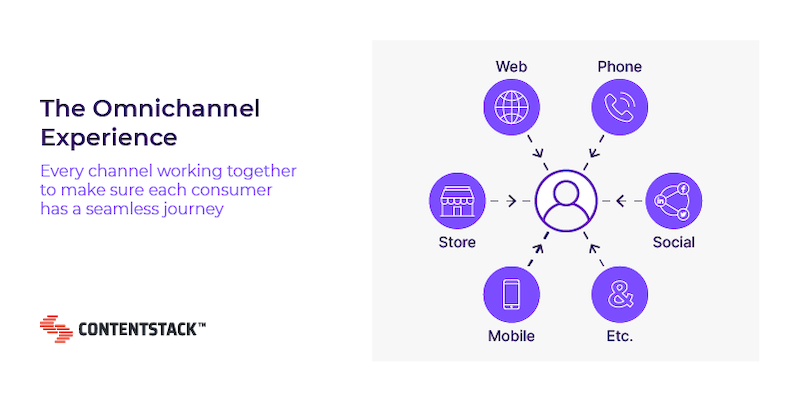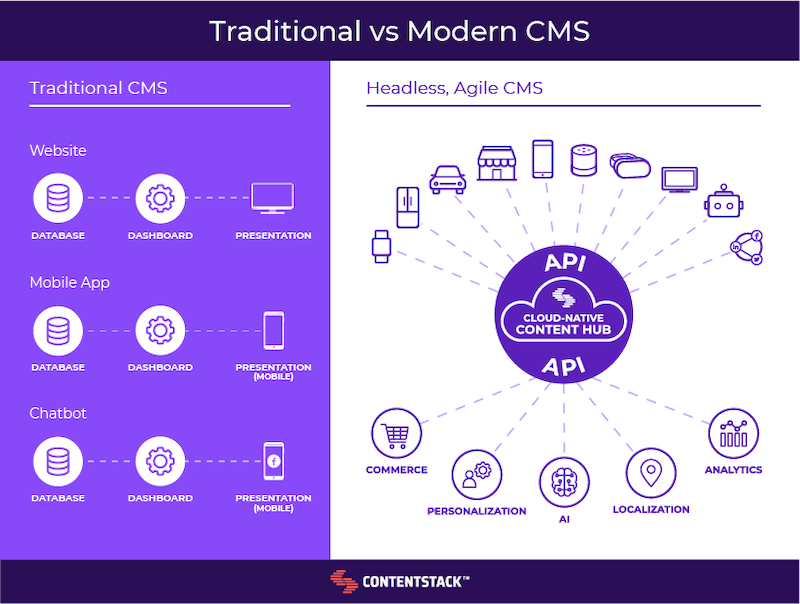“Both.”
That’s what most consumers would tell you if you asked them whether they preferred to shop online or in-store. Yet, just 70% of retailers provide what they consider a “unified” commerce experience that enables customers to “start the sale anywhere, finish the sale anywhere.” While this is certainly a step in the right direction, it doesn’t exactly describe an all-encompassing (or “omni”) experience.
Which raises the question: What really are these omnichannel experiences that everyone seems to be talking about? And is it actually possible to deliver them, or are they more science fiction than fact? Travel through space and time with us in this article as we attempt to answer both of these questions.
Omnichannel Experiences: The Oversell of the Century
Omnichannel experiences promise to provide cohesive and personalized consumer-brand interactions across channels and devices. The goal is to create seamless experiences that don’t just turn consumers into customers once but provide ongoing support that boosts retention and overall lifetime value.

Omnichannel experiences sound great, right? Unfortunately, execution has been stalling out ever since the term “omnichannel experiences” became the buzzword of the century in marketing circles. Omnichannel experiences should be what every modern consumer is enjoying from the brands with which they interact. Yet, most companies have failed to deliver on the full promise of the omnichannel experience.
There are several reasons why this continues to happen, many of which we’ll discuss in the next section. (By the way, if you stay tuned to the end of this article, we’ll also be covering how businesses can overcome these hardships and finally deliver omnichannel experiences consumers will love!)
What Makes Omnichannel Experiences so Hard to Deliver?
What are the hardships that keep omnichannel experiences more fiction than fact for many businesses? Let’s find out.
Consumer Channels Have Exploded
In 2020, the average household had 10 different internet-connected devices. All told, the number of these internet-enabled devices is expected to hit 46 billion globally in 2021. And do you know what people are doing with all these phones, watches, computers, tablets, and other devices? They’re interacting with brand social media channels, blogs, chat services, podcasts, ads, webinars, affiliate marketers, PR efforts, and more.
With all these channels, today it takes a consumer an average of 8 “touches” or interactions before they complete their first conversion. The explosion of channels upon which consumers can have their omnichannel experiences has created a lot of ground for marketers to cover.
The Time it Takes to Create Omnichannel Content is Mind-Boggling
We’re sure you’ll agree that content lies at the heart of the omnichannel experience. It’s the first branded element with which consumers will interact, and it’s often the same element that will guide their entire relationship with your business. But this makes content both a blessing and a curse in modern marketing.
It’s a time-consuming task to create content for all of the previously mentioned channels, devices, and other platforms. And that task becomes almost unfathomable when you’re creating fresh, high-quality, and even personalized content at such a scale. Creating the right quality and quantity of content to feed the omnichannel experience machine is nearly impossible when you don’t have a thoughtful system in place.
Customer Information is Often Siloed
Close to 40% of customer experience leaders say that fragmented or siloed customer data has hurt their efforts to develop true omnichannel experiences. Silos in the workplace are often a result of technological tools that aren’t able to effectively share data with each other. And this fragmentation of information is worsened by poor communication tools and habits. It’s a hard nut to crack, but the businesses that are able to update their tech (more on that later) as well as modernize their communication practices should also be able to overcome customer information silos.
How Do You Manage All That Customer Data?
If silos aren’t your problem and you actually do have a way to gather all that customer information in one place, that’s great! However, now there’s something else to worry about. How are you going to organize all that data, make sense of it, and actually apply what you’ve learned?
With all the channels and platforms upon which customers interact and all the new tools on the market that enable you to gather data from these interactions, chances are you’re collecting a ton of data. It takes a custom combo of tools, complete with artificial intelligence (AI), to actually develop and apply your consumer data learnings. The good news is that, while we can’t walk you through the whole process in today’s article, we can help you get started with the foundational tech it takes to make your data work for you.
Real-Time Personalization is a Full-Time Job
Real-time decisioning (RTD) is the process of delivering the right experience to the right consumer at the right time—and on the right channel, of course. Serving this kind of quick personalization either takes a lot of time or a lot of tools, such as AI-powered customer data platforms (CDPs), predictive analytics systems, and more.
That’s why, not so surprisingly, a measly 14% of marketers would call their experience with decisioning successful. To be part of the modern marketing departments raising that percentage, you have to be ready to put in a lot of time or invest in the right tools.
Most Current Tech Simply Can’t Keep Up
Chances are at least some of the marketing tech you’re using was created before many of the above developments (always-connected consumers, the personalization push, etc.) became the new norm.
In fact, 66% of developers say maintaining legacy tech hinders productivity and 64% of IT decision-makers have already prioritized upgrading said outdated tech. And we probably don’t have to tell you that this old-school, legacy technology is holding you back from creating successful omnichannel experiences.

If you’re stuck in the loop of expensive and time-consuming marketing tech that actually hinders your team from creating modern experiences for modern channels, here’s what you’ve been missing.
What You Need to Build Future-Ready Omnichannel Experiences
That once-empty promise that “Omnichannel is here!” doesn’t have to be a pipedream when you have the right foundation with which to integrate and implement modern marketing tech.
The right foundation is a MACH, headless content management system (CMS).
When it comes to marketing tech, MACH means tools that:
- Are built on lightweight apps called microservices
- Connect and communicate via application programming interface (API)
- Live in and are delivered via the cloud
- Employ headless architecture
It’s this last characteristic—the headless architecture—that makes agile, headless CMS with MACH features a perfect cornerstone for omnichannel experiences. With a modern, headless CMS, content creation and content presentation exist separately. This structure makes it so that marketers can generate content-led experiences while designers and developers build out the perfect distribution channels that make those experiences omnichannel.
And because of the modular, flexible infrastructure of headless CMS, it’s easy to integrate with all kinds of tools and services—like the aforementioned CDPs and predictive analytics systems as well as CRMs, ecommerce platforms, localization tools, and lots more—that make creating plenty of personalized content possible.

Close the Book on Outdated Marketing Tech Today
Science fiction is something that belongs on your bookshelf, not in your marketing program.
To create real omnichannel experiences your consumers trust and a content creation process your employees believe in, you have to pull your tech out of the past.
And the easiest way to get started is to upgrade the platform where most of your content creation tasks take place: Your CMS. To learn how to actually choose the best modern CMS, check out our guide “How to Choose an Enterprise CMS That’s Right for Your Firm.”
And if you want to learn more about building a modern marketing strategy that will really make the most of your CMS investment, read “How to Nail Your Enterprise Marketing Strategy.”
